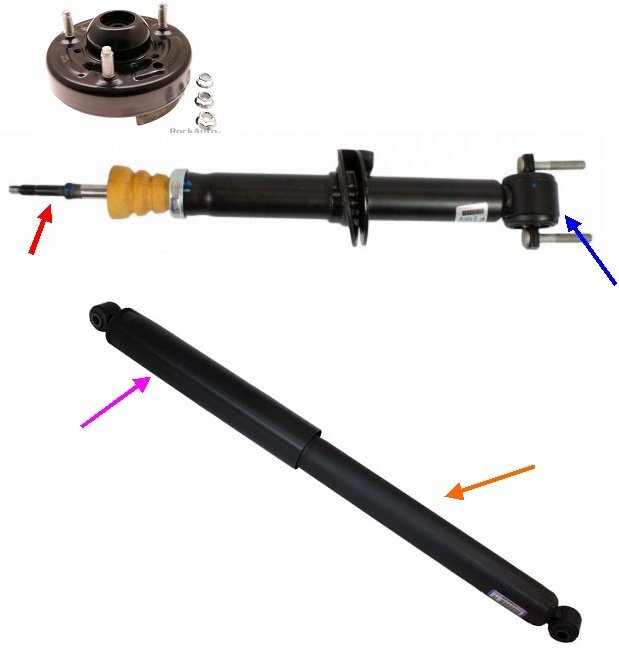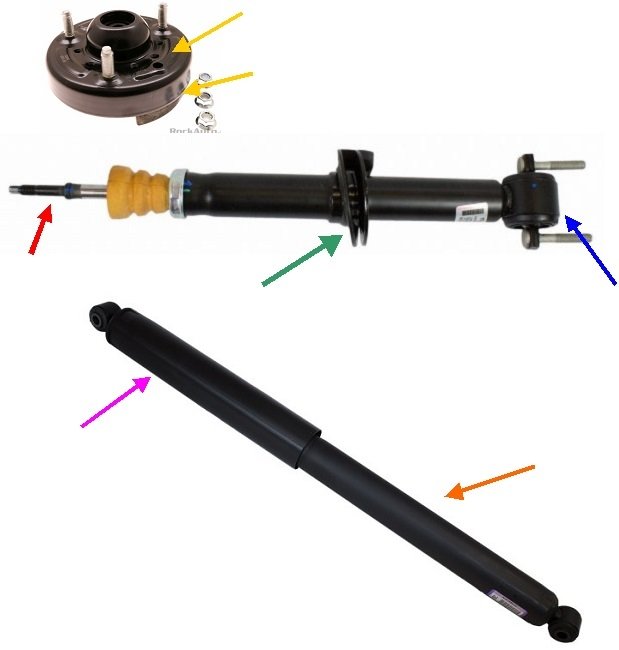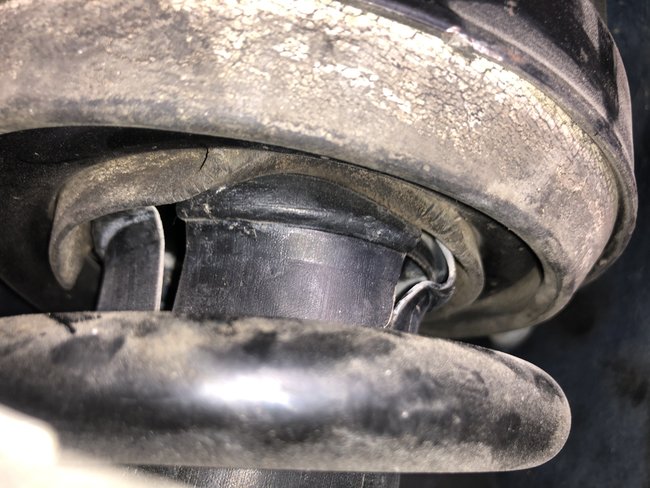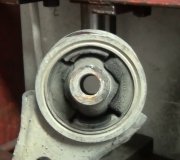I can't really tell by the photo, but keep in mind, any vibration or bouncing has to be caused by something that is rotating. If it could be caused by something else, the problem would occur while the vehicle was standing still.
Now, to explain further, worn or improperly-installed steering and suspension parts can allow a vibration to be worse, or they can allow the bouncing to occur, but they can't cause it on their own. First there would have to be a problem with a broken tire belt, a tight front outer universal joint or CV joint that binds, then lets go as it rotates, or even a warped brake rotor. All of those things can cause a vibration that is too small to feel, but they can be amplified to the point you can feel them if the strut isn't doing its job, or if there's wear in control arm bushings, tie rod ends, or ball joints. Also, there doesn't have to be a defect with a tire. Road forces are transferred to the steering and suspension parts, so a good tire that's rotating normally can result in a vibration if other parts are worn or loose.
At this point I think I'd be looking for a second opinion for someone at a tire and alignment specialty shop. That's what I did for many years. Those people are experts at finding the causes of vibrations, noises, and bad tire wear.
Also be aware of the importance of the geometric relationship of the steering and suspension parts. This is greatly affected by altering ride height, which is the only other variable since this problem started. Imagine standing on one foot, with your arms at your side, and holding a five-pound pail of nails in one hand. How long could you do that before you got tired? Now imagine holding that pail with your arm stretched out to your side so it's parallel to the ground. You'd have much less control over that pail, and the much higher force would make you tired much sooner. This is what happens when the geometric design changes between suspension parts when ride height changes from what was designed in. Since I can't see your truck, this is why I would value a second opinion from a different shop. If there's a problem with the strut, the mechanic who did the work should fix it for you. The second mechanic may find some other cause that has been overlooked up to this point.
Thursday, December 17th, 2020 AT 1:16 PM





